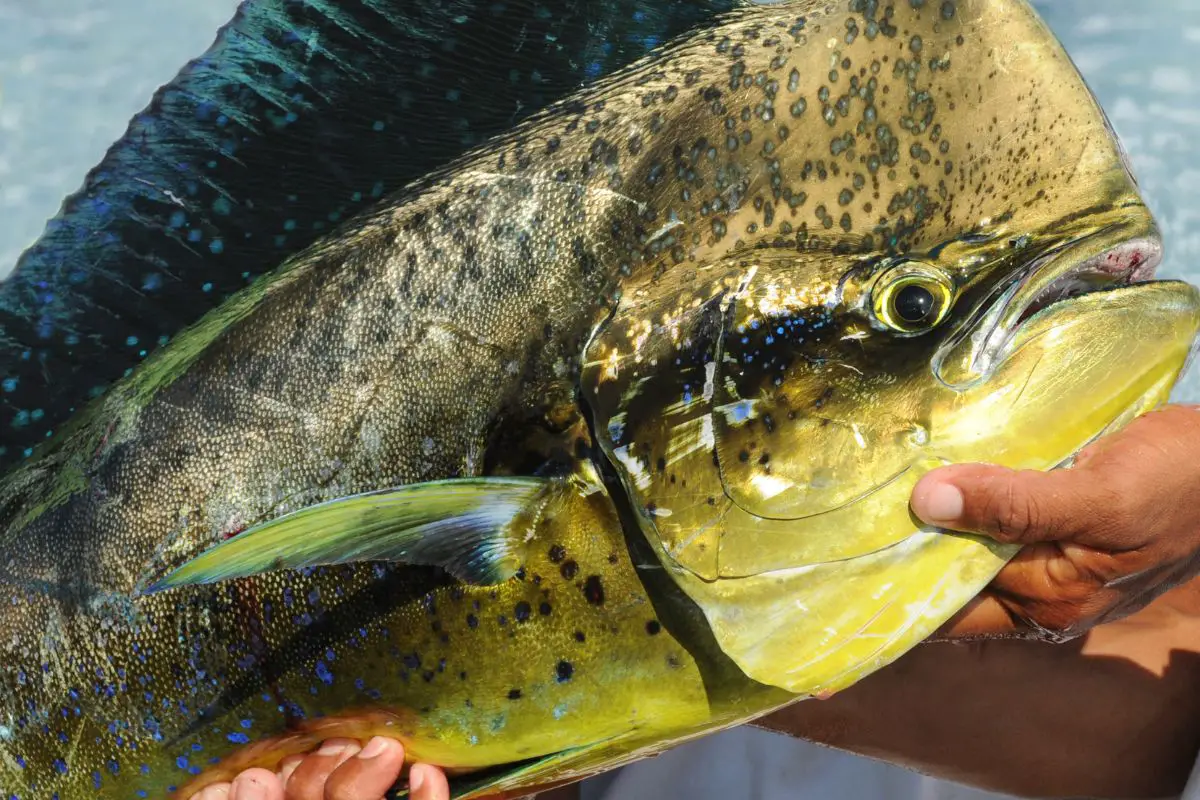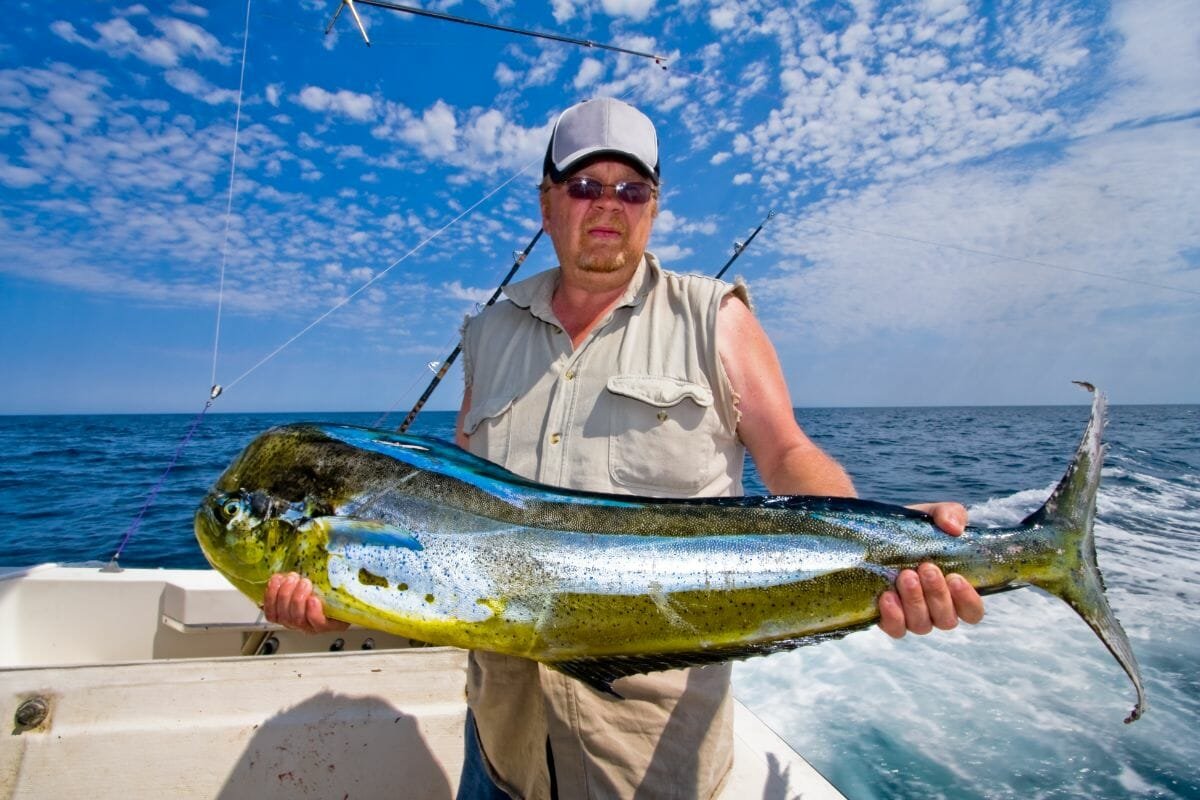Climate change is causing tropical species to migrate to waters that were previously more temperate or cold
A coryphène dorado caught in the Cantabrian Sea, an unusual find.
Last weekend, a group of fishermen from the port of Saint-Jean-de-Luz, in the French department of Pyrénées-Atlantiques, made an exceptional catch at sea aboard their boat named Bayonne. Casting their nets in the waters off the Basque coast, they managed to catch a dorado coryphène, also known as mahi-mahi in other parts of the world.
This exotic fish is one of the fastest on the planet and its discovery on this coast is extremely unusual. The dorado coryphène usually lives in warm oceans, far from the cold waters of the North Atlantic, so the fact that it has been caught in these latitudes has attracted the attention of experts and the scientific community, reports La République des Pyrénées.
The dorado coryphène stands out not only for the colour of its body and its size, but especially for its speed in the water. It has been recorded reaching speeds of almost 100 kilometres per hour, placing it among the fastest known marine animals.
From one to 2.40 metres
Adult specimens usually measure at least one metre, although it is not uncommon to find individuals exceeding two metres in length, even reaching 2.40 metres. Its life expectancy is short, averaging around four years. In addition to its speed, it is highly valued in sport and commercial fishing, as it is highly prized on international markets, especially in America.
The fact that a species native to tropical waters has been caught off the northern French Atlantic coast is not entirely new, but it remains a rarity. The dorado coryphène is a migratory species, with no fixed boundaries beyond the characteristics of water temperature.
According to the New Aquitaine Regional Sea Fishing Committee, as reported by La République des Pyrénées, in recent years ‘this species has been seen more regularly in the southern Bay of Biscay’. This phenomenon is not isolated, as for approximately three years, different species typical of warm waters have been recorded in areas where they were not previously found.
The effects of climate change
Specialists attribute this development directly to climate change. The progressive increase in sea temperatures favours the movement of tropical species towards previously temperate or even cold waters, significantly altering local ecosystems. According to the experts consulted, ‘global warming is changing the composition of marine biodiversity and favouring the arrival of species foreign to these environments’.
The dorado coryphène prefers waters above 20 degrees and is normally found in large areas of the Atlantic, Indian and Pacific oceans. Until now, it was practically invisible to fishermen on the Basque coast, as it avoided less warm waters. Given its migratory nature, the absence of limits other than temperature allows it to travel long distances if conditions permit.
For this reason, its capture has become an example that illustrates the ‘transformation of marine ecosystems’, as highlighted by the Regional Maritime Fisheries Committee. The discovery in Saint-Jean-de-Luz raises new questions about the adaptation of marine fauna to the sustained rise in ocean temperatures.

The largest fish in the Mediterranean
Another striking catch took place just a few months ago in Catalonia. Last April, a fishing boat from Port de la Selva, on the Costa Brava, accidentally caught a basking shark (cetorhinus maximus), considered the largest fish in the Mediterranean and the second largest in the world, behind only the whale shark. The specimen, which was over seven metres long and weighed more than a tonne, was found entangled in the boat’s nets, already dead.
The basking shark is a protected species classified as ‘vulnerable’. In Spain, it is most frequently sighted between April and October, when the waters reach warmer temperatures and there is a greater proliferation of plankton. Various NGOs are working to raise awareness of the need to protect this species and improve protocols for stranding or incidental capture, having documented several cases of specimens caught in trawl nets.





